Ah, indoor plants! The verdant companions of our confined living quarters, enhancing the ambiance while concurrently providing scientifically proven benefits such as improved air quality, reduced stress levels, and an overall heightened sense of well-being. With an extensive array of flora at our disposal, selecting the optimal specimens for one’s indoor botanical haven may appear to be both exhilarating and formidable.
Fear not, for this comprehensive guide shall illuminate the intricacies of various indoor plants, meticulously classified by factors such as photosynthetic requirements, hydration protocols, distinctive attributes, morphological patterns, foliar idiosyncrasies, and more. Whether your botanical expertise rivals that of Charles Darwin or you are but a novice in the realm of indoor horticulture, this article endeavors to equip you with the knowledge necessary to cultivate a resplendent, flourishing sanctuary that is an accurate reflection of your unique predilections.
The Taxonomical Odyssey: Categorizing and Classifying Plants
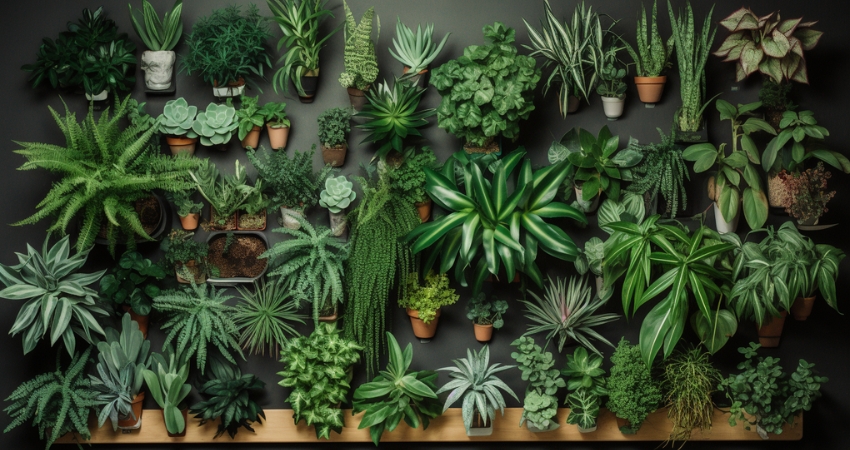
As we embark on a journey through the captivating world of plant taxonomy, it is crucial to comprehend the fundamental principles of categorizing and classifying plants. In the grand scheme of biological classification, plants are systematically organized into hierarchical groups based on shared characteristics, enabling botanists and enthusiasts alike to identify and study them more effectively.
The Hierarchical Structure of Plant Classification
The process of plant classification adheres to a well-established hierarchical structure, as outlined below:
- Kingdom: The highest rank in the biological classification system, the Plantae kingdom encompasses all plants, including mosses, ferns, and flowering species.
- Division (or Phylum): Plants are further subdivided into divisions or phyla based on significant morphological and physiological differences, such as the presence or absence of vascular tissue.
- Class: Within each division, plants are classified into classes based on characteristics like reproductive structures and life cycles.
- Order: Orders are groups of plants within a class that exhibit similar traits, often relating to their evolutionary relationships.
- Family: Comprising multiple genera, families are distinguished by shared features such as flower structures or chemical compositions.
- Genus: A genus represents a group of closely related species, often characterized by distinct morphological and ecological traits.
- Species: The most specific level of classification, a species typically consists of a group of individuals that can interbreed and produce fertile offspring.
Categorizing Plants Based on Various Criteria
Apart from the aforementioned taxonomical classification, plants can be categorized based on various criteria to facilitate understanding and meet specific requirements. Some of these criteria include:
- Growth Habit: Plants can be categorized as trees, shrubs, herbs, or vines based on their growth habits and structures.
- Life Cycle: Botanical specimens may be classified as annuals, biennials, or perennials, depending on the duration of their life cycle.
- Habitat: Categorizing plants according to their native habitats, such as aquatic, terrestrial, or epiphytic, can provide insights into their environmental preferences and ecological roles.
- Light Requirements: Grouping plants by their optimal light conditions, such as low light, medium light, or bright light, can assist in selecting appropriate specimens for specific indoor environments.
- Cultivation Requirements: Plants can be classified based on factors like water needs, temperature preferences, and soil conditions to ensure they receive optimal care and nourishment.
By understanding the various methods of categorizing and classifying plants, we can enhance our appreciation for their intricacies and diversity, facilitating the cultivation of flourishing indoor gardens tailored to our personal tastes and environmental conditions.
Now, Lets explore different types of indoor plants, helping you find the perfect match for your home or office.
Types of Indoor Plants by Light Requirements
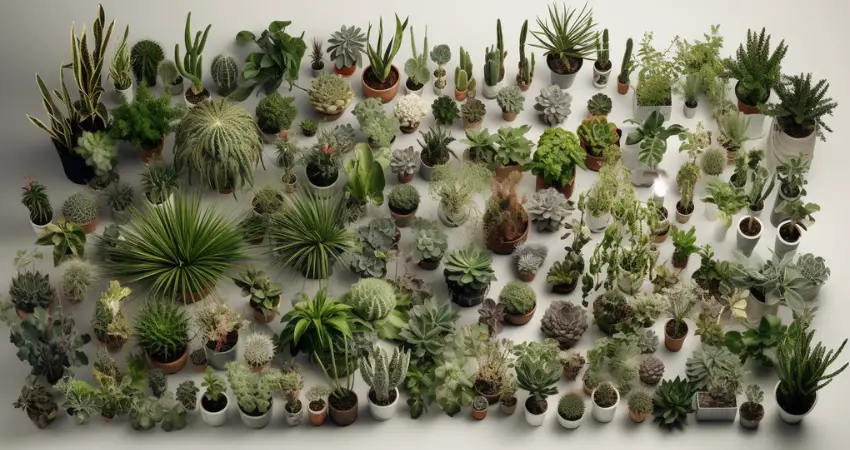
Low-Light Plants
Low-light plants thrive in dimly lit spaces or rooms with minimal natural light. Ideal for apartments or windowless offices, these hardy plants can adapt to less-than-optimal conditions. Some popular examples of low-light plants include:
- Snake plant (Sansevieria): Also known as “Mother-in-Law’s Tongue,” the snake plant is well-known for its tall, upright leaves with a striking, variegated pattern.
- ZZ plant (Zamioculcas zamiifolia): With its glossy, deep green leaves, the ZZ plant adds a touch of elegance to any space while being highly resilient.
- Pothos (Epipremnum aureum): This trailing plant features heart-shaped leaves, making it an excellent choice for hanging baskets or shelves.
Medium-Light Plants
Medium-light plants require a moderate amount of sunlight, often found in east or west-facing windows. These plants are versatile and can adjust to varying light conditions, making them an excellent choice for many indoor environments. Some notable medium-light plants include:
- Peace lily (Spathiphyllum): This elegant plant is known for its dark green foliage and showy white flowers, which can bloom multiple times a year.
- Spider plant (Chlorophytum comosum): With long, arching leaves and distinctive “spiderettes” that dangle from the parent plant, the spider plant adds a touch of whimsy to any room.
- Philodendron (Philodendron spp.): With various species and cultivars available, philodendrons can offer diverse shapes and sizes, ranging from trailing vines to large, upright plants.
High-Light Plants
High-light plants need plenty of sunlight to thrive, making them suitable for bright, south-facing windows or rooms with ample natural light. Some popular high-light plants are:
- Fiddle leaf fig (Ficus lyrata): With its large, violin-shaped leaves, the fiddle leaf fig adds a dramatic touch to any room. However, it does require consistent care to maintain its lush appearance.
- Rubber plant (Ficus elastica): Known for its large, glossy leaves, the rubber plant can grow quite tall, making it a striking addition to bright spaces.
- Croton (Codiaeum variegatum): The croton boasts colorful, variegated foliage, adding a splash of color to sunlit spaces. Keep in mind that it requires consistent warmth and humidity to thrive.
Types of Indoor Plants by Watering Needs
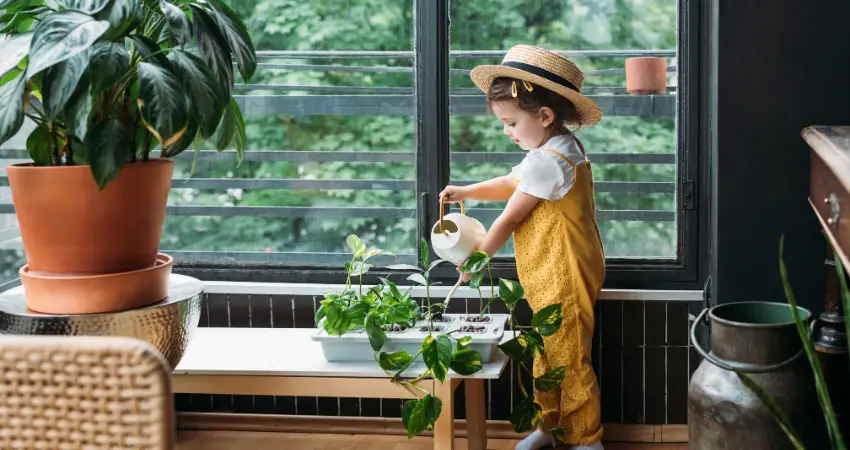
Drought-Tolerant Plants
Drought-tolerant plants require minimal watering, making them perfect for those with a busy schedule or who might forget to water regularly. Some examples of drought-tolerant plants include:
- Cacti (Cactaceae family): Available in various shapes and sizes, cacti add a touch of desert charm to any space. Many cacti also produce stunning flowers.
- Succulents (Crassulaceae family): With their fleshy leaves and unique shapes, succulents offer a low-maintenance option for adding greenery to your home. Some popular succulents are Echeveria, Crassula (jade plant), and Haworthia.
- Aloe vera (Aloe barbadensis miller): This well-known medicinal plant not only adds a touch of beauty to your space but can also be used to soothe burns and skin irritations.
Moisture-Loving Plants
Moisture-loving plants require regular watering and higher humidity levels. These plants are ideal for people who enjoy a more hands-on approach to plant care. Some moisture-loving plants to consider are:
- Ferns (Polypodiopsida class): With their delicate, feathery fronds, ferns bring a sense of calm and tranquility to any space. Popular fern varieties include the Boston fern and maidenhair fern.
- Prayer plant (Maranta leuconeura): Known for its patterned leaves that fold up at night, as if in prayer, this plant thrives in consistently moist soil and high humidity.
- Boston fern (Nephrolepis exaltata): This popular fern variety is known for its lush, arching fronds and is perfect for hanging baskets or placed on a pedestal.
Space Constraints: Selecting Plants Based on Available Space
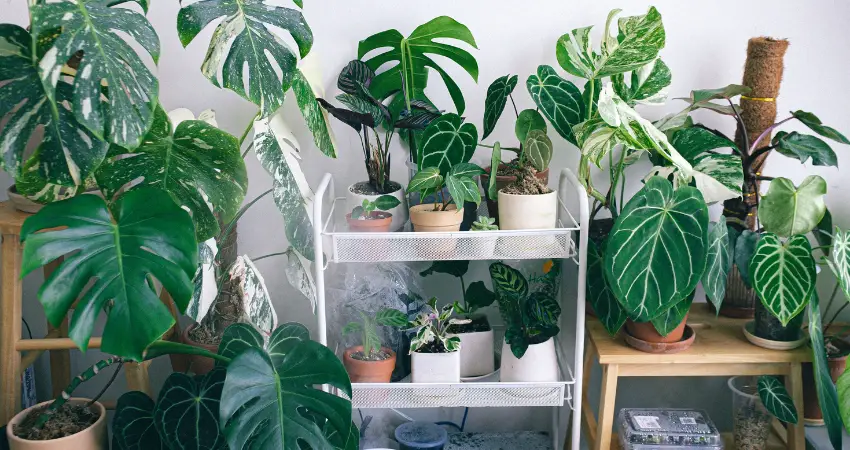
Small-Space Plants
Small-space plants are perfect for adding a touch of greenery to limited spaces such as desktops, windowsills, or small shelves. Some excellent small-space plants include:
- African violet (Saintpaulia spp.): With its compact growth habit and colorful, velvety flowers, the African violet is a popular choice for small spaces.
- Lucky bamboo (Dracaena sanderiana): Often grown in water, lucky bamboo can be easily shaped and manipulated, making it a versatile option for small spaces.
- Air plants (Tillandsia spp.): These unique plants do not require soil, allowing for creative displays on mounted surfaces, terrariums, or even suspended in the air.
Medium-Space Plants
Medium-space plants are suitable for filling larger areas or creating a focal point in a room. Some popular medium-space plants are:
- Monstera (Monstera deliciosa): With its distinctive, split leaves, the Monstera adds a touch of tropical flair to your space.
- Dracaena (Dracaena spp.): Available in various sizes and leaf patterns, Dracaena plants can be an eye-catching addition to any room.
- Calathea (Calathea spp.): Known for their striking, patterned leaves, Calathea plants can add a touch of sophistication and interest to your space.
Large-Space Plants
Large-space plants can create a significant impact, making them ideal for spacious rooms or areas with high ceilings. Some notable large-space plants include:
- Kentia palm (Howea forsteriana): This elegant palm brings a touch of the tropics to your space and can grow quite tall, making it perfect for large rooms.
- Bird of paradise (Strelitzia reginae): With its large, paddle-shaped leaves and stunning flowers, the bird of paradise can create a dramatic focal point in any space.
- Majesty palm (Ravenea rivularis): This lush, tropical palm can grow quite tall, making it an excellent option for filling large spaces with greenery.
Maintenance: Choosing Plants Based on Care Requirements
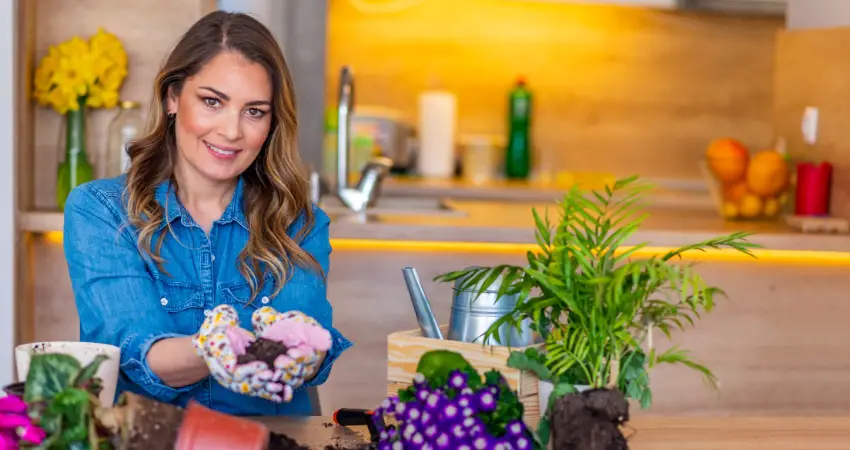
Low-Maintenance Plants
Low-maintenance plants require minimal care, making them perfect for those with busy schedules or who are new to plant care. Some low-maintenance plant options include:
- Cast-iron plant (Aspidistra elatior): Aptly named for its hardiness, the cast-iron plant can tolerate a wide range of conditions, making it an ideal choice for low-maintenance plant enthusiasts.
- Devil’s ivy (Epipremnum aureum): Also known as pothos or golden pothos, this hardy trailing plant can adapt to various light levels and is forgiving when it comes to watering.
- Chinese evergreen (Aglaonema spp.): With its colorful, variegated leaves and ability to adapt to various light conditions, the Chinese evergreen is an attractive, low-maintenance option.
Moderate-Maintenance Plants
Moderate-maintenance plants may require a bit more care and attention, such as regular pruning or specific watering schedules. Some popular moderate-maintenance plants are:
- Ficus (Ficus spp.): The ficus family includes popular indoor plants like the fiddle leaf fig and rubber plant, which may require more attentive care, such as regular watering, pruning, and proper light conditions.
- Orchids (Orchidaceae family): Known for their stunning flowers, orchids can be relatively easy to care for once you understand their specific needs, such as proper watering, humidity, and light conditions.
- Anthurium (Anthurium spp.): With its showy, heart-shaped flowers, the anthurium is a popular choice for brightening up indoor spaces. It requires consistent moisture and humidity to thrive.
High-Maintenance Plants
High-maintenance plants may require specialized care, such as precise watering, humidity, or temperature requirements. These plants are suitable for those who enjoy a more hands-on approach to plant care or are looking for a challenge. Some high-maintenance plants to consider are:
- Gardenia (Gardenia spp.): Known for its beautiful, fragrant flowers, gardenias require precise care, including specific temperature, humidity, and light conditions, as well as regular fertilizing.
- Maidenhair fern (Adiantum spp.): While visually stunning with its delicate, lacy fronds, the maidenhair fern requires consistent moisture, high humidity, and protection from drafts.
- Bonsai (Various species): The art of bonsai involves the meticulous care and shaping of miniature trees, requiring patience, skill, and dedication.
Types of Indoor Plants by Special Features
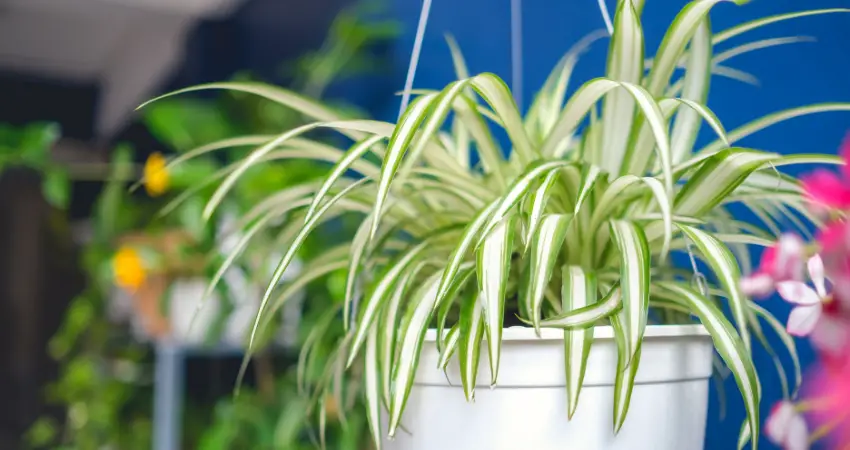
Air-Purifying Plants
Air-purifying plants can help improve indoor air quality by removing toxins and pollutants. Some popular air-purifying plants include:
- Spider plant (Chlorophytum comosum): In addition to being easy to care for, the spider plant is known for its ability to remove pollutants like formaldehyde and benzene from the air.
- Boston fern (Nephrolepis exaltata): This moisture-loving plant is not only visually appealing but also effective at purifying the air, especially in humid environments.
- Areca palm (Dypsis lutescens): The areca palm is not only a beautiful addition to any space but also an efficient air purifier, known for its ability to remove toxins like formaldehyde and xylene.
Fragrant Plants
Fragrant plants can add a delightful scent to your home, creating a more inviting atmosphere. Some popular fragrant plants are:
- Jasmine (Jasminum spp.): Known for its sweet, intoxicating scent, jasmine can be grown indoors and trained to climb or trail, depending on the available space.
- Lavender (Lavandula spp.): Although typically grown outdoors, some lavender varieties can be cultivated indoors, filling your home with their soothing fragrance.
- Gardenia (Gardenia spp.): Despite being high-maintenance, gardenias are sought after for their large, fragrant blooms that can fill a room with their sweet scent.
Pet-Friendly Plants
For households with pets, it’s essential to choose plants that are non-toxic and safe for your furry companions. Some pet-friendly plant options include:
- Bamboo palm (Chamaedorea seifrizii): This non-toxic palm is an excellent choice for pet owners, providing a lush, tropical look while also purifying the air.
- Spider plant (Chlorophytum comosum): The versatile spider plant is not only safe for pets but also easy to care for and effective at removing pollutants from the air.
- Calathea (Calathea spp.): With their eye-catching foliage, Calathea plants can add visual interest to your space while being safe for pets.
Unusual or Exotic Plants
For those looking for something unique or eye-catching, consider adding unusual or exotic plants to your indoor garden. Some intriguing options include:
- Mimosa pudica (Sensitive plant): This fascinating plant is known for its ability to rapidly fold its leaves in response to touch or vibrations, making it a fun and interactive addition to your collection.
- Corpse flower (Amorphophallus titanum): While not suitable for most homes due to its massive size and pungent odor, the corpse flower is a fascinating example of a rare and exotic plant that can be admired in botanical gardens.
- Lithops (Living stones): These small, succulent plants closely resemble small rocks or pebbles, making them an intriguing and low-maintenance option for your indoor garden.
Growth Habit: Selecting Plants Based on Shape and Form
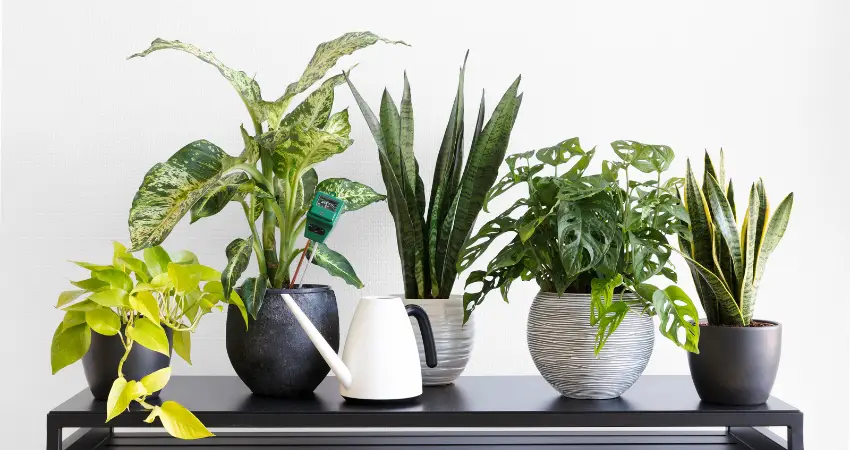
Climbing and Trailing Plants
Climbing and trailing plants can add a dynamic element to your indoor garden, cascading from shelves or climbing up walls. Some popular climbing and trailing plants include:
- English ivy (Hedera helix): This classic trailing plant can be trained to climb or allowed to cascade from hanging baskets, adding a touch of elegance to your space.
- Swiss cheese plant (Monstera adansonii): This fast-growing climber is known for its unique, perforated leaves and can be trained to grow on a support structure, such as a trellis or moss pole.
- Philodendron (Philodendron spp.): With many trailing and climbing varieties available, philodendrons can create a lush, tropical look in your indoor space.
Upright Plants
Upright plants grow vertically, adding height and structure to your indoor garden. Some popular upright plants are:
- Snake plant (Sansevieria spp.): Known for its tall, stiff leaves that grow upright, the snake plant is a low-maintenance option that can add height and interest to any space.
- Yucca (Yucca spp.): This desert plant features upright, sword-like leaves and can add a bold, architectural element to your indoor garden.
- Rubber plant (Ficus elastica): With its large, glossy leaves and upright growth habit, the rubber plant can create a striking focal point in your home.
Bushy and Spreading Plants
Bushy and spreading plants have a more horizontal growth habit, often creating a lush, full appearance. Some popular bushy and spreading plants include:
- ZZ plant (Zamioculcas zamiifolia): This hardy plant features glossy, green leaves and a bushy growth habit, making it a popular choice for adding fullness to your indoor garden.
- Dieffenbachia (Dieffenbachia spp.): With its large, variegated leaves, the dieffenbachia plant can create a full, lush look while also purifying the air.
- Croton (Codiaeum variegatum): Known for its colorful, patterned foliage, the croton plant can add a touch of vibrancy and fullness to your space.
Foliage Color and Texture: Adding Visual Interest with Leaves
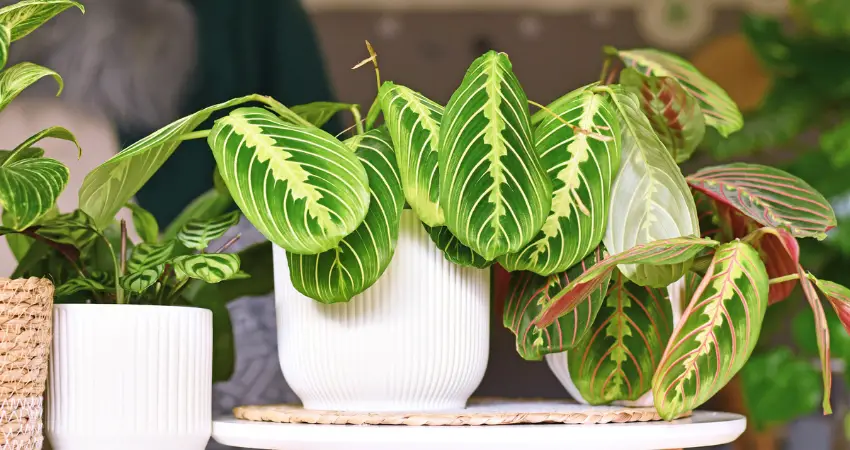
Variegated Foliage
Plants with variegated foliage feature leaves with multiple colors, adding visual interest and contrast to your indoor garden. Some popular plants with variegated foliage include:
- Marble queen pothos (Epipremnum aureum ‘Marble Queen’): This variety of pothos features green and white marbled leaves, adding a touch of elegance to any space.
- Variegated rubber plant (Ficus elastica ‘Variegata’): With its striking green and cream-colored leaves, the variegated rubber plant can create a stunning focal point.
- Wandering Jew (Tradescantia zebrina): This trailing plant features silver, green, and purple variegated leaves, making it a colorful addition to your indoor garden.
Colorful Foliage
Plants with colorful foliage can add a pop of color to your space, even when not in bloom. Some popular plants with colorful foliage are:
- Purple passion plant (Gynura aurantiaca): Known for its velvety, purple leaves, this plant can add a rich, jewel-toned hue to your indoor garden.
- Croton (Codiaeum variegatum): With its vibrant red, yellow, and green leaves, the croton plant can bring a splash of color to any space.
- Rex begonia (Begonia rex-cultorum): This begonia variety is prized for its stunning, multicolored foliage, which can include shades of silver, pink, purple, and green.
Unique Textures
Plants with unique textures can create an interesting tactile experience in your indoor garden. Some popular plants with unique textures include:
- Ponytail palm (Beaucarnea recurvata): This quirky plant features long, wispy leaves that cascade from a swollen base, creating a unique, fountain-like appearance and an interesting texture.
- Bird’s nest fern (Asplenium nidus): The bird’s nest fern has wavy, rippled leaves that add a touch of texture and visual interest to your indoor garden.
- Alocasia (Alocasia spp.): Often referred to as “elephant’s ear” plants, alocasias boast large, textured leaves that can create a bold, tropical look in your home.
Flowering vs. Non-Flowering: Choosing Plants for Blooms or Foliage
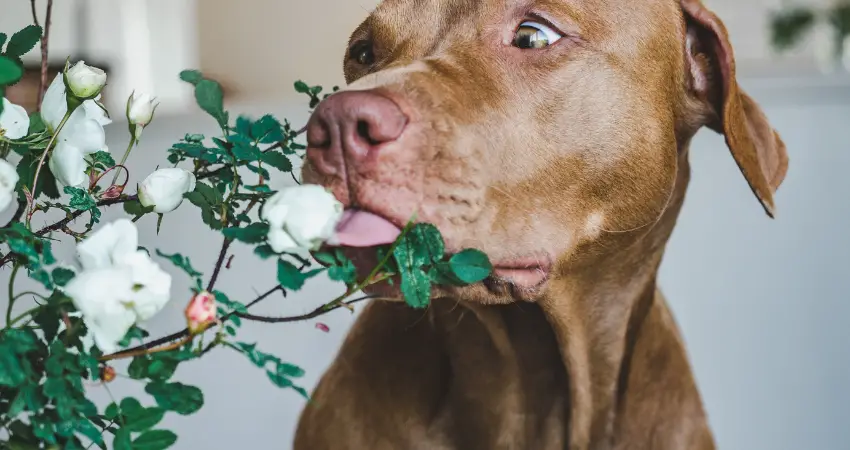
Flowering Plants
Flowering plants can add a touch of color and fragrance to your indoor garden. Some popular indoor flowering plants are:
- African violet (Saintpaulia spp.): These compact plants produce clusters of small, velvety flowers in a variety of colors and are relatively easy to care for.
- Peace lily (Spathiphyllum spp.): Known for its elegant white flowers and glossy green leaves, the peace lily is a popular indoor plant that also purifies the air.
- Bromeliads (Bromeliaceae family): With their exotic, colorful blooms, bromeliads can make a striking addition to your indoor garden and are relatively low-maintenance.
Non-Flowering Plants
Non-flowering plants are appreciated for their foliage, rather than blooms, and can provide year-round interest in your indoor garden. Some popular non-flowering plants are:
- Snake plant (Sansevieria spp.): Valued for its architectural, upright leaves, the snake plant is a low-maintenance option that can also improve indoor air quality.
- Ferns (Various species): With their delicate, feathery fronds, ferns can add a touch of softness and texture to your indoor garden.
- Philodendron (Philodendron spp.): Available in many different varieties, philodendrons are prized for their attractive foliage and adaptability to various indoor conditions.
Wrapping Up
In conclusion, the world of indoor plants offers a diverse array of options, with varying characteristics, requirements, and appearances to suit every home and gardener. By understanding the different types of indoor plants based on factors like light requirements, maintenance levels, special features, growth habits, foliage characteristics, and flowering or non-flowering tendencies, you can make informed choices that will allow you to curate an indoor garden that thrives and brings joy to your space. Whether you’re seeking air-purifying plants, pet-friendly options, exotic specimens, or plants with unique foliage, there’s a plant for everyone. Happy planting, and enjoy the journey of creating your own lush, indoor oasis!
